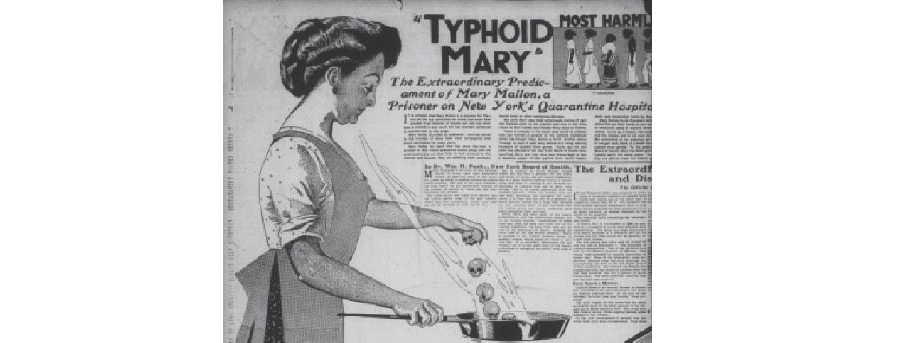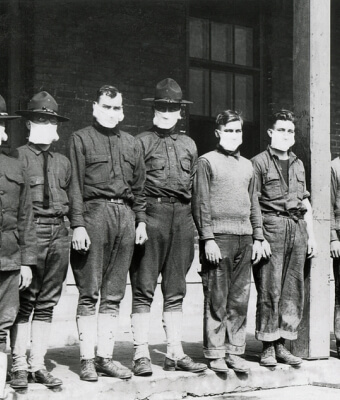Introduction:
In the early 20th century, an outbreak of typhoid fever occurred in New York City, USA. A young cook named Mary Mallon, also known as “Typhoid Mary,” was found to be the carrier of the disease. She unknowingly spread the bacteria to those around her, causing several people to become sick and die. This incident brought attention to the importance of identifying and controlling infectious diseases. This article will explore the story of Typhoid Mary, her role in the spread of typhoid fever, and its impact on public health.
What is Typhoid Fever?
Typhoid fever is a bacterial infection caused by the bacterium Salmonella typhi. It is usually spread through contaminated food or water. The symptoms of typhoid fever include fever, headache, stomach pain, and diarrhea. In severe cases, it can lead to internal bleeding and death1,2.
Who was Typhoid Mary?
Mary Mallon was an Irish immigrant who worked as a cook in New York City in the early 1900s. She was known for her delicious and well-prepared meals, but she was also unknowingly carrying the bacteria that causes typhoid fever. Mary was never sick with typhoid fever, but she was a carrier of the bacteria in her gallbladder, which she shed in her feces. This made her a danger to those around her, as she could easily spread the disease3.
Mary was first identified as a carrier of typhoid fever in 1907, after several people in a household where she worked became sick with the disease. The New York City Department of Health traced the outbreak back to Mary, and she was quarantined for three years. After her release, she continued to work as a cook and was identified as the source of several more outbreaks of typhoid fever. In total, Mary is believed to have infected at least 51 people, three of whom died from the disease4.
The Controversy:
Mary Mallon’s case sparked controversy at the time. She was not sick with typhoid fever herself, and she did not understand how she could be spreading the disease. Mary was also very resistant to being tested and quarantined, as she believed that she was healthy and that the authorities were unfairly targeting her. Some people believed that Mary was being unfairly punished, while others saw her as a threat to public health.
The Impact on Public Health:
The case of Typhoid Mary had a significant impact on public health5. It highlighted the importance of identifying and controlling infectious diseases. The New York City Department of Health began to take more aggressive measures to identify carriers of typhoid fever and other diseases. They also began to require food handlers to be tested for typhoid fever.
The case also led to changes in the way that carriers of infectious diseases were treated6. Mary Mallon was quarantined for three years, even though she was not sick with typhoid fever. This raised questions about the ethics of quarantining people who were not sick. Today, carriers of infectious diseases are still monitored and controlled, but there are more safeguards in place to protect their rights and prevent discrimination.

Conclusion:
The story of Typhoid Mary is a cautionary tale about the importance of identifying and controlling infectious diseases. Mary Mallon was a carrier of typhoid fever, and she unknowingly spread the disease to those around her. Her case sparked controversy and raised questions about the ethics of quarantining people who were not sick. It also led to changes in public health policies and practices that have helped to prevent the spread of infectious diseases. Mary Mallon’s story serves as a reminder that infectious diseases can be deadly, and that it is essential to take measures to protect public health.
Reference
- National Institute of Allergy and Infectious Diseases. Typhoid Fever. Available from: https://www.niaid.nih.gov/diseases-conditions/typhoid-fever
- Centers for Disease Control and Prevention. Typhoid Fever. Available from: https://www.cdc.gov/typhoid-fever/index.html
- National Center for Biotechnology Information. Mary Mallon, the Original Typhoid Mary. Available from: https://www.ncbi.nlm.nih.gov/pmc/articles/PMC1071073/
- Soper GA. The Curious Career of Typhoid Mary. New York Medical Journal. 1939;50:877-884.
- Leavitt J. Typhoid Mary: Captive to the Public’s Health. Beacon Press; 1996.
- Markel H. The Fever: How Malaria Has Ruled Humankind for 500,000 Years. Vintage; 2020.

